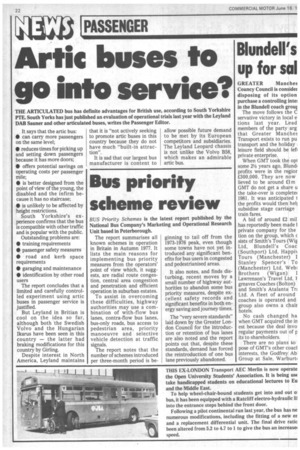Bus priority scheme review
Page 24

If you've noticed an error in this article please click here to report it so we can fix it.
BUS Priority Schemes is the latest report published by the National Bus Company's Marketing and Operational Research Unit based in Peterborough.
The report summarises all known schemes in operation in Britain in Autumn 1977. It lists the main reasons for implementing bus priority measures from the operators' point of view which, it suggests, are radial route congestion, central area congestion and penetration and efficient operation in suburban estates.
To assist in overcoming these difficulties, highway authorities may use a combination of with-flow bus lanes, contra-flow bus lanes, bus-only roads, bus access to pedestrian area, priority manoeuvre and selective vehicle detection at traffic signals.
The report notes that the number of schemes introduced per three-month period is be ginning to tail off from the 1973-1976 peak, even though some towns have not yet introduced any significant benefits for bus users in congested and pedestrianised areas.
It also notes, and finds disturbing, recent moves by a small number of highway authorities to abandon some bus priority measures, despite excellent safety records and significant benefits in both energy saving and journey times.
The "very severe standards" laid down by the Greater London Council for the introduction or retention of bus lanes are also noted and the report points out that, despite these standards, demand has forced the reintroduction of one bus lane previously abandoned.
















































































































